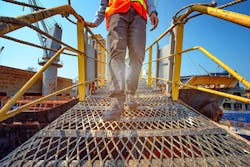Using Servos Improves Control and Boosts ROI in Packaging Applications
As we try to become more efficient and get better at monitoring plant performance, the information and control provided by modern technology far outweigh the comfort of simplicity from older technologies.
With technology price points decreasing, becoming smaller and more efficient, they become increasingly accessible. This allows engineers to integrate them into key functions of different machinery to improve their output. The integration of servo technology is helping packaging machinery run more efficiently with less downtime, making the overall packaging process more user-friendly.
A perfect example of the benefits of servo drives can be found in IPAK tray formers. With two servos, control is maximized while reducing waste. The first servo advances the corrugate blank into the compression section, and the second servo actuates the mandrel drive to form the final tray.
The main role of the first servo drive is to guarantee precise speed control. Since everything is on timers, the first servo drive ensures that the correct amount of glue is applied to the corrugate. Managing the proper amount of glue means three things:
- Less glue is consumed, which minimizes waste and glue costs
- Glue doesn’t spill over the front or back edge of the corrugate; supporting a cleaner machine and better-looking tray
- When the glue is placed more precisely in the proper location, you achieve a more perfectly formed tray for improved stacked strength
The second servo motor controlling the mandrel enables users to increase their speed (trays per minute) to boost throughput. With a traditional pneumatic system, speeding up the process results in less control, i.e., you can’t differentiate output for items that are sized differently. With a servo, users can adjust the motion time value to achieve greater efficiency in motion.
From a wear and tear and performance standpoint, servo drives deliver a far superior system to an all-pneumatic system. Servo mandrel drives are sealed units, requiring less maintenance compared to a mechanical system. With two servos, noise is reduced significantly compared to a rack and pinion or a chain-driven mechanical machine. Less noise and maintenance equate to more user-friendly machines with less downtime and more efficient throughput.
When you compare a Wexxar Bel servo drive tray former to a competitor’s mechanical tray former, you’ll find that the servo version can accommodate more styles and sizes with a single system. A mechanical system would need much more space for the same number of styles and sizes. For systems using servos, you don’t need a mechanic to go inside the machine to make changes. If you want to increase the speed and throughput, that can all be done from the HDMI.
At the end of the day, systems using servo drives deliver improved efficiency and a quicker ROI. Servo drives allow users to have a higher degree of accuracy and control with cases while reducing noise, downtime, and wasted resources.

